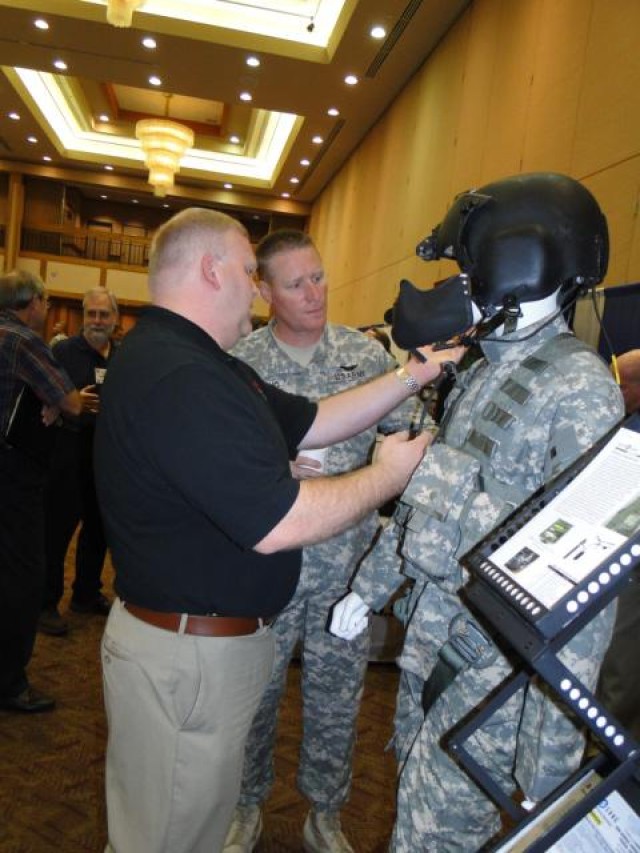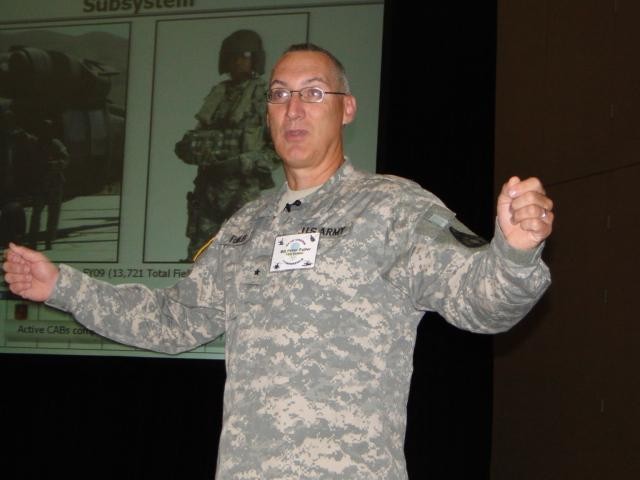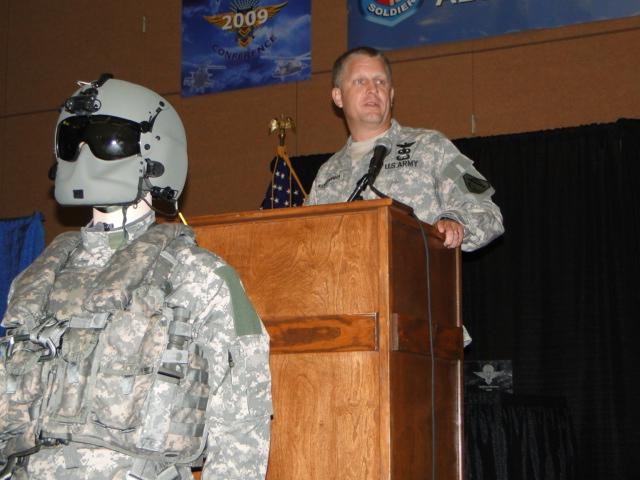Increasing survivability and combat effectiveness while improving Soldier quality of life are at the top of the list for those working to equip Soldiers with the best equipment during a time of uptempo operations, said the commander of the Program Executive Office-Soldier.
But there are challenges to achieving that goal - namely, the large number of products Soldiers wear and carry that need to be integrated, the number of times a Soldier receives equipment prior to an assignment or deployment, the weight and size of equipment Soldiers are required to carry in theater, and the need to reset individual Soldier ensembles following deployments.
"We want to increase the survivability of Soldiers working in any environment," said Brig. Gen. Peter Fuller, commander of the Program Executive Office-Soldier and the Natick Soldier Systems Center.
"We are making changes inside the program executive offices to better serve the Soldier. We are one of 13 PEOs. We are out there touching brigades too frequently ... There are 40 touches from PEOs on the average brigade."
Fuller's comments came during the opening session of the annual Aviation Life Support Equipment Users Conference at the Von Braun Center. The conference is attended primarily by Soldiers, and contractors who design and manufacture Soldier equipment. Fuller is the first commander of PEO-Soldier to speak at the conference.
Reviewing several of PEO-Soldier's 468 products - such as body armor, weapons, and sensors and lasers, Fuller said products go through an evolution of development based on comments from the Soldiers in the field who use the products.
"We try to listen to what you are saying. We want to take your feedback, roll it in and give you a better product," Fuller said "We want your feedback so that we know what we can do to help you do your job better. We are constantly trying to improve your capability."
It is up to PEO-Soldier to find ways to integrate the equipment Soldiers need to be successful, he said, adding that job is more difficult when working to meet the rapid fielding initiative.
"How do we take all the capability (we've developed) and put it together in a package and bring it to the individual Soldier' ... We are constantly giving you new products. You are going to see the evolution," Fuller said. "We're going to give you the right capability before you deploy."
Addressing equipment needed by air warriors, Fuller reviewed changes in the air warrior ensemble and the electronic data manager (digital kneeboard) that have been made as a result of Soldier feedback. Through its evolution, the air warrior ensemble has a redesigned holster for multi positions, reduced bulk and increased access, new Web attachment system, standardized pouches, added back panel webbing for future equipment growth and other features.
Today, the third generation ensemble - known as the Air Warrior Survival Equipment Subsystem --provides advanced life support, ballistic protection, and nuclear, biological and chemical protection. The ensemble's concept is continually being improved with interoperability in mind and consists of components that increase mission effectiveness and provide a means for safe and reliable escape, survival and recovery in emergency or combat situations. A total of 13,721 Air Warriors have been fielded and complete fielding is expected in 2011.
"Now you have all that capability on your person," Fuller said of the air warrior ensemble. "It's a pretty neat ensemble that ties everything together and offers the latest and the greatest."
Likewise, the electronic data manager has evolved with feedback from Apache pilots into a device that has a thinner profile, lighter weight, brighter display and larger data storage capability. The EDM has been fielded to 1,029 Air Warriors to date with complete fielding expected in 2012.
The Aircraft Wireless Intercom System is another product that has evolved with Soldier input. Currently, the unencrypted version is being fielded with MEDEVAC companies with the unencrypted version planned for all UH-60 and CH-47 crews beginning in fiscal 2012.
"This is one of the greatest challenges we have," Fuller said, referring to the unencrypted versus encrypted versions of the AWIS. "We don't want to have information to leak from the encrypted version into open networks ... But how much data is not perishable when you are on the ground' Why are we going to encrypt everything' When we're on the ground the enemy already knows where we are. The issue drives cost, drives schedule and doesn't give us the capability."
Wireless is the way to go, though, Fuller said, and provides a "great capability."
Another new system - the Portable Helicopter Oxygen Delivery System - reduces the need to carry oxygen tanks in helicopters. The Army has fielded 1,175 systems to date with fielding completed in 2011.
"In Afghanistan, you don't know when you are going to be at a high elevation and when you will have to go higher to get over a storm," Fuller said. "This system takes air and turns it into oxygen without the need of transporting big green oxygen bottles."
Other products - including the MicroClimate Cooling System, Fire Resistant Environmental Ensemble System, Army Aircrew Combat Uniform, Aviator's Night Vision System and Aviation Laser Pointer - are all new systems that are being fielded or are planned for fielding. Many of the systems are developed for aviators, but are also being used by ground forces.
When systems like the Apache, Black Hawk, Abrams, Bradley, Humvee and Multiple Launch Rocket System were developed "we forgot to take care of the Soldiers in the process," Fuller said. "We forgot we put people inside these platforms. Now, when we put them in these platforms, we want to make sure they are prepared."
Future systems include the Helmet Hear-Through Capability, Go Bag/Hydration System, Modular Aircrew Common Helmet and a cooler Army Aircrew Combat Uniform.
"Without a doubt, there is still unbelievable support on the hill (in Congress)," Fuller said, addressing funding. "There might not be the support there for big platforms in the future. But there is support for the Soldier. The Soldier will be part of the Army reset budget."
At Redstone Arsenal, the Air Warrior product management office, under the direction of Lt. Col. Ian Klinkhammer, is constantly reviewing upgrades to the Air Warrior ensemble, electronic data manager and other products that affect the Army's pilots and aircrews. There are 3,812 registered users on the Air Warrior website who can provide input on products.






Social Sharing